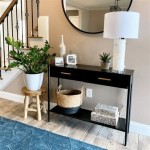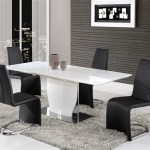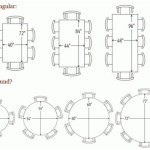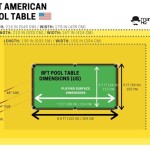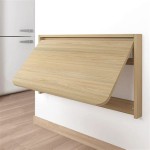Oval Coffee Table With Marble Top: A Study in Elegance and Function
The oval coffee table with a marble top represents a significant intersection of design principles, material properties, and functional utility. This furniture piece, often a focal point in a living room or seating area, blends the smooth, organic shape of an oval with the inherent sophistication and durability of marble. Its design versatility allows integration into various interior styles, from classic to contemporary, making it a popular choice for discerning homeowners and interior designers.
The appeal of an oval coffee table with a marble top lies in its ability to provide both aesthetic enhancement and practical benefit. The oval shape, lacking sharp corners, promotes easier navigation around the table and reduces the risk of bumping. The marble top offers a durable, heat-resistant surface suitable for holding drinks, displaying decorative items, or serving as a temporary workspace. Furthermore, the natural veining and unique patterns inherent in marble ensure that each table is a one-of-a-kind piece.
The origins of coffee tables can be traced back to the late Victorian era, evolving from lower versions of tea tables. The introduction of marble as a tabletop material added a layer of luxury and longevity. Over time, the design has been refined, with the oval shape becoming increasingly favored for its visual balance and spatial efficiency. This evolution reflects changing preferences in interior design, moving towards pieces that are both stylish and functional.
The selection of an appropriate oval coffee table with a marble top requires careful consideration of several factors. These include the type of marble, the dimensions of the table, the style of the base, and the overall aesthetic of the room. Making informed choices regarding these aspects will ensure that the table harmonizes with its surroundings and fulfills its intended purpose effectively.
The Allure of Marble: Types and Characteristics
Marble, a metamorphic rock composed primarily of recrystallized carbonate minerals, is prized for its inherent beauty and durability. Its formation process involves the transformation of limestone or dolomite under intense heat and pressure, resulting in unique veining patterns and a crystalline structure. Different types of marble exhibit distinct characteristics, influencing their visual appeal and suitability for specific applications.
Carrara marble, quarried in Italy, is perhaps the most well-known and widely used variety. Characterized by its white or blue-gray background and soft, feathery veining, Carrara marble offers a classic and elegant aesthetic. Its relative abundance makes it a more affordable option compared to some other types of marble. However, its porous nature requires sealing to prevent staining and damage from spills.
Calacatta marble, also from Italy, is distinguished by its bold, dramatic veining against a bright white background. The veins are typically thick and may range in color from gold to gray. Calacatta marble is considered a premium material, often used in high-end applications due to its luxurious appearance. Its scarcity and striking visual appeal contribute to its higher price point.
Emperador marble, originating from Spain, features a rich brown background with lighter veining patterns. The warm, earthy tones of Emperador marble create a sense of sophistication and elegance. Its durability and resistance to staining make it a practical choice for coffee table tops. This marble type can be easily incorporated into various interior design schemes, adding depth and character to the space.
Green marble, such as Verde Alpi, provides a distinctive and unique aesthetic. Its green color is due to the presence of serpentine minerals. The veining patterns can range from subtle to dramatic, adding visual interest and character. Green marble is often used to create a bold statement and can be particularly effective in modern or eclectic interior designs.
The choice of marble type should be guided by the desired aesthetic and the overall design of the room. Lighter marbles, such as Carrara and Calacatta, tend to create a brighter and more airy feel, while darker marbles, such as Emperador, add warmth and drama. The maintenance requirements of each marble type should also be considered, as some varieties are more susceptible to staining and etching than others.
Shape and Size: Optimizing Space and Functionality
The oval shape of the coffee table offers several advantages over rectangular or square designs. Its rounded edges promote smoother traffic flow, reducing the risk of accidental bumps and bruises. This is particularly important in smaller living spaces or homes with young children. The absence of sharp corners also contributes to a more relaxed and inviting atmosphere.
The size of the oval coffee table should be proportionate to the size of the seating area. A general guideline is to choose a table that is approximately two-thirds the length of the sofa. This ensures that the table is easily accessible from all seating positions without overwhelming the space. The height of the table should also be considered; it should ideally be at the same height as the sofa cushions or slightly lower.
A larger oval coffee table can serve as a focal point in a spacious living room, providing ample surface area for displaying decorative items, holding drinks, and serving snacks. In smaller spaces, a smaller oval table can be a more practical choice, maximizing floor space and creating a more open feel. Consider the intended use of the table when determining the appropriate size.
The oval shape can also be particularly effective in balancing the linear lines of a room. By introducing a curved element, the oval coffee table softens the overall aesthetic and creates a more visually appealing space. This is especially beneficial in rooms with predominantly rectangular furniture and architectural features.
The choice of table size also depends on the number of people who will typically be using the space. A larger table is more suitable for families or those who frequently entertain, while a smaller table may be sufficient for individuals or couples. Consider the typical usage patterns of the room when making your decision.
Base Materials and Styles: Complementing the Marble Top
The base of an oval coffee table with a marble top plays a crucial role in its overall aesthetic and structural integrity. The choice of base material and style can significantly impact the table's visual appeal and its ability to complement the surrounding furniture and décor. Common base materials include wood, metal, and acrylic, each offering distinct characteristics and design possibilities.
Wooden bases provide a warm and natural aesthetic, complementing the cool elegance of the marble top. A variety of wood species can be used, each with its own unique grain pattern and color. Oak, walnut, and maple are popular choices for their durability and visual appeal. Wooden bases can be crafted in a variety of styles, from traditional to contemporary, allowing for seamless integration into various interior designs.
Metal bases offer a sleek and modern aesthetic, providing a striking contrast to the natural beauty of the marble top. Stainless steel, wrought iron, and brass are common metal base materials, each offering distinct visual characteristics. Metal bases can be finished in a variety of colors and textures, from polished to brushed, allowing for customization to suit specific design preferences. The strength and durability of metal ensure that the table remains stable and secure.
Acrylic bases offer a transparent and minimalist aesthetic, allowing the marble top to take center stage. The clear acrylic creates a sense of lightness and airiness, making it an ideal choice for smaller spaces. Acrylic bases can be molded into various shapes and designs, adding a touch of contemporary flair to the table. The non-porous nature of acrylic makes it easy to clean and maintain.
The style of the base should complement the overall design of the room. A traditional living room may benefit from a wooden base with ornate carvings or turned legs, while a modern living room may be better suited to a sleek metal base with clean lines. Consider the existing furniture and décor when choosing the base style to ensure a cohesive and harmonious look.
The base should also be sturdy and well-constructed to support the weight of the marble top. The joints should be strong and secure, and the base should be level to prevent wobbling. Investing in a high-quality base will ensure that the table remains stable and functional for years to come.
In conclusion, the oval coffee table with a marble top is a versatile and elegant piece of furniture that can enhance the aesthetic and functionality of any living space. By carefully considering the type of marble, the dimensions of the table, the style of the base, and the overall design of the room, it is possible to select a table that perfectly complements its surroundings and fulfills its intended purpose effectively.

Striking Parioli Marble Top Coffee Table By Italian Furniture Designer Tonin Casa

47 7 In Gold Oval White Faux Marble Top Champagne Finish Coffee Table

Britney Walnut White Oval Coffee Table With Marble Top Shop For Affordable Home Furniture Decor Outdoors And More

Modern Living Room Oval Coffee Table With Metal Frame Faux Marble To Decobuys

Currs Glam Oval Coffee Table Marble Top With Stainless Steel Frame Homary

Luxurious Set Of 2 Marble Top Oval Coffee Table Tables Furniture

Khari Modern Classic White Marble Glass Top Gold Nesting Oval Coffee Tables

Glossy Marble Black Oval Coffee Table Caravana Furniture

Marble Topped Pedestal Coffee Table Modern Living Room Furniture West Elm

47 6 Modern Oval Faux Marble Top Coffee Table With 2 Drawers Gold Metal Base In White

